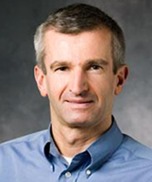
Brunger.
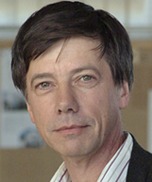
Jahn.
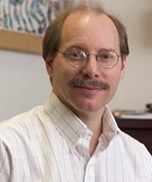
Novick.
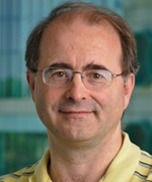
Rizo-Rey.
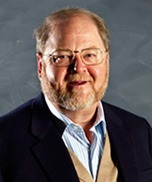
Rothman.
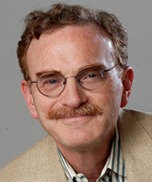
Schekman.

Scheller.
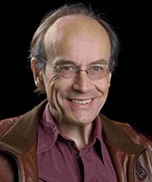
Südhof.
The 2013 Nobel Prize in Physiology or Medicine was awarded to Thomas Südhof, James Rothman, and Randy Schekman for their pioneering studies of membrane vesicle trafficking. In systems as diverse as the human brain and baker's yeast and with approaches from mouse genetics and electrophysiology to enzymology to powerful genetic screens, they have unraveled this process, illuminating basic cell biology. Their studies provide molecular understanding to neurotransmission, regulated insulin secretion, and a host of human diseases.
In 1974, Palade and de Duve were recognized for discovering the secretory pathway and demonstrating its directionality through electron microscopy and pulse/chase kinetics in combination with organelle fractionation. Although whole realms of cell biology of comparable complexity were by then understood in some detail, from intermediary metabolism to DNA replication, transcription, and translation, the catalysts and mechanisms of the secretory pathway were completely unknown. In the secretory pathway, newly made proteins are captured in vesicles that bud from the endoplasmic reticulum, fuse to the Golgi, and travel through that organelle into secretory vesicles that fuse at the plasma membrane.
Schekman was born in Minnesota and grew up in Los Angeles, saving his money as a lad for his first microscope and entering science fairs. At University of California–Los Angeles, he worked with Dan Ray on bacteriophage replication, and then brought this passion to Stanford for his graduate studies in Arthur Kornberg's laboratory, the Temple of Enzymology. Later, in his own laboratory at Berkeley, he reasoned that baker's yeast offered all of the advantages for a reductionist approach to the secretory pathway. In the late 1970s, Schekman and Peter Novick devised an elegant selection for mutant yeast cells, termed sec mutants, which were reversibly blocked in secretion (1). They reasoned that cells that were blocked in the path leading to secretory vesicles and cell surface growth, but that continued macromolecular synthesis, would thereby grow dense. Through selecting temperature-sensitive density mutants, they obtained a cornucopia of sec mutants. These were placed in complementation groups, their stages of secretion arrest inferred from the glycosylation pattern of the retained secreted enzyme invertase, and they were characterized morphologically. The initial studies were published in PNAS (2). Novick went on to discover actin's role in organelle movement, the Rab family of trafficking GTPases, and large Rab-effector tethering complexes and their dynamics, while Schekman's group developed functional assays of trafficking that required SEC-encoded proteins and focused on organelle budding, discovering the coat complex termed COPII.
In the same era, Jim Rothman's group was developing biochemical assays of trafficking. Rothman grew up in Massachusetts, graduating from Yale and doing his doctoral studies with the membrane pioneer Eugene Kennedy at Harvard Medical School. Founding his own laboratory at Stanford, he too was influenced by Arthur Kornberg's focus on the power of purifying proteins that reflect complex biology from in vitro reactions. Rothman prepared Golgi from CHO cells that had been infected with vesicular stomatitis virus (VSV) expressing a major membrane protein, the VSV-G protein. These cells lacked a specific glycosyltransferase. Golgi isolated from these cells were incubated with Golgi isolated from uninfected, WT CHO cells that bore the missing glycosyltransferase, and trafficking between these two Golgi allowed the glycosyltransferase to have access to the VSV-G and catalyze its N-acetylglycosylation. This biochemical assay (3) required cytosol and ATP, leading to the purification of a required N-ethylmaleimide (NEM)–sensitive soluble ATPase (NSF). NSF would not bind to Golgi by itself, but required a separate protein, the soluble NSF attachment (to the membrane) protein, termed SNAP. The discovery that mammalian and yeast proteins were functionally interchangeable (4) revealed a striking conservation of trafficking mechanisms.
While Schekman was establishing the genetics of trafficking, and Rothman the first functional assays, the groups of Tom Südhof, Richard Scheller, and Reinhard Jahn were taking a more structural approach to identifying the major synaptic proteins. Südhof grew up and was educated in Germany, but came to the United States to postdoc with Brown and Goldstein in Dallas, and then remained as a faculty member. In the late 1980s and early 1990s, abundant proteins of the neuronal synapse were cloned and examined for associations (5). Several neurotoxins were found to be proteases, and the identification of the proteins later termed syntaxin and synaptobrevin as targets of these proteases, by Montecucco's group and others, provided compelling evidence for their direct role in exocytosis (6). When Südhof's group cloned and sequenced synaptotagmin, they discovered that it has C2 domains similar to the calcium-dependent protein kinase C (7). Recombinant synaptotagmin was found to bind to membranes in a calcium-dependent manner (8), and this protein was established as the major synaptic calcium sensor by an elegant combination of electrophysiology of knock-in mice with mutant synaptotagmin (9).
In a signal contribution, Rothman's group found that immobilized, purified SNAP that was incubated with detergent extract of whole brain selectively bound syntaxin and synaptobrevin proteins, and NSF and ATP were then required for their release (10). These proteins were termed soluble NEM-sensitive factor receptor, or SNARE proteins. Reinhard Jahn, with colleagues Dirk Fasshauer and Axel Brunger, showed that SNAREs with their characteristic heptad repeats can be placed in subfamilies according to the polar arginine or glutamine at a center of their SNARE domain (11), and determined the crystal structure of a complex of the four helical SNARE core domains (12). Axel Brunger and Reinhard Jahn, together with Fasshauer and Sutton, determined the crystal structure of the complex of the four helical neuronal SNARE core domains (12), revealing that SNAREs with their characteristic heptad repeats can be placed in subfamilies according to the polar arginine or glutamate at the center of the core complex (11).
The SNAREs were shown to directly catalyze lipid mixing in proteoliposomes (13), establishing their central role in fusion. SNARE function is tightly coupled to bound proteins such as Munc13 and Munc18 for synaptic fusion and by Sec1/Munc18 homologs and large tethering complexes for many other intracellular SNARE-dependent membrane fusion events. Reconstituted reactions reflecting more of the complete physiological complexity, regulation, and kinetics have appeared (14–17). The neuronal fusion reconstitution is strictly dependent on Munc18-1and Munc13 (17), in full accord with Südhof's group's findings.
What do these three brilliant scientists honored with this year's Nobel award share in common? Short, tall, East coast, West coast, thin, less-thin—no common feature meets the eye. However, each is scientifically fearless and passionately in love with science, each conveys his full enthusiasm and brilliance in lectures, and each is endowed with wonderful humor and personal charm. It is this full devotion, and joy in the work, that unites this year's Nobelists, with each other and with their many friends and admirers around the world.
Footnotes
The author declares no conflict of interest.
References
- 1.Novick P, Field C, Schekman R. Identification of 23 complementation groups required for post-translational events in the yeast secretory pathway. Cell. 1980;21(1):205–215. doi: 10.1016/0092-8674(80)90128-2. [DOI] [PubMed] [Google Scholar]
- 2.Novick P, Schekman R. Secretion and cell-surface growth are blocked in a temperature-sensitive mutant of Saccharomyces cerevisiae. Proc Natl Acad Sci USA. 1979;76(4):1858–1862. doi: 10.1073/pnas.76.4.1858. [DOI] [PMC free article] [PubMed] [Google Scholar]
- 3.Balch WE, Dunphy WG, Braell WA, Rothman JE. Reconstitution of the transport of protein between successive compartments of the Golgi measured by the coupled incorporation of N-acetylglucosamine. Cell. 1984;39(2 Pt 1):405–416. doi: 10.1016/0092-8674(84)90019-9. [DOI] [PubMed] [Google Scholar]
- 4.Dunphy WG, et al. Yeast and mammals utilize similar cytosolic components to drive protein transport through the Golgi complex. Proc Natl Acad Sci USA. 1986;83(6):1622–1626. doi: 10.1073/pnas.83.6.1622. [DOI] [PMC free article] [PubMed] [Google Scholar]
- 5.Trimble WS, Cowan DM, Scheller RH. VAMP-1: A synaptic vesicle-associated integral membrane protein. Proc Natl Acad Sci USA. 1988;85(12):4538–4542. doi: 10.1073/pnas.85.12.4538. [DOI] [PMC free article] [PubMed] [Google Scholar]
- 6.Schiavo G, et al. Tetanus and botulinum-B neurotoxins block neurotransmitter release by proteolytic cleavage of synaptobrevin. Nature. 1992;359(6398):832–835. doi: 10.1038/359832a0. [DOI] [PubMed] [Google Scholar]
- 7.Perin MS, Fried VA, Mignery GA, Jahn R, Südhof TC. Phospholipid binding by a synaptic vesicle protein homologous to the regulatory region of protein kinase C. Nature. 1990;345(6272):260–263. doi: 10.1038/345260a0. [DOI] [PubMed] [Google Scholar]
- 8.Brose N, Petrenko AG, Südhof TC, Jahn R. Synaptotagmin: A calcium sensor on the synaptic vesicle surface. Science. 1992;256(5059):1021–1025. doi: 10.1126/science.1589771. [DOI] [PubMed] [Google Scholar]
- 9.Fernández-Chacón R, et al. Synaptotagmin I functions as a calcium regulator of release probability. Nature. 2001;410(6824):41–49. doi: 10.1038/35065004. [DOI] [PubMed] [Google Scholar]
- 10.Söllner T, et al. SNAP receptors implicated in vesicle targeting and fusion. Nature. 1993;362(6418):318–324. doi: 10.1038/362318a0. [DOI] [PubMed] [Google Scholar]
- 11.Fasshauer D, Sutton RB, Brunger AT, Jahn R. Conserved structural features of the synaptic fusion complex: SNARE proteins reclassified as Q- and R-SNAREs. Proc Natl Acad Sci USA. 1998;95(26):15781–15786. doi: 10.1073/pnas.95.26.15781. [DOI] [PMC free article] [PubMed] [Google Scholar]
- 12.Sutton RB, Fasshauer D, Jahn R, Brunger AT. Crystal structure of a SNARE complex involved in synaptic exocytosis at 2.4 A resolution. Nature. 1998;395(6700):347–353. doi: 10.1038/26412. [DOI] [PubMed] [Google Scholar]
- 13.Weber T, et al. SNAREpins: Minimal machinery for membrane fusion. Cell. 1998;92(6):759–772. doi: 10.1016/s0092-8674(00)81404-x. [DOI] [PubMed] [Google Scholar]
- 14.Mima J, Hickey CM, Xu H, Jun Y, Wickner W. Reconstituted membrane fusion requires regulatory lipids, SNAREs and synergistic SNARE chaperones. EMBO J. 2008;27(15):2031–2042. doi: 10.1038/emboj.2008.139. [DOI] [PMC free article] [PubMed] [Google Scholar]
- 15.Ohya T, et al. Reconstitution of Rab- and SNARE-dependent membrane fusion by synthetic endosomes. Nature. 2009;459(7250):1091–1097. doi: 10.1038/nature08107. [DOI] [PubMed] [Google Scholar]
- 16.Diao J, et al. Synaptic proteins promote calcium-triggered fusion from point contract to full fusion. eLife 1. 2012:e00109. doi: 10.7554/eLife.00109. [DOI] [PMC free article] [PubMed] [Google Scholar]
- 17.Ma C, Su L, Seven AB, Xu Y, Rizo J. Reconstitution of the vital functions of Munc18 and Munc13 in neurotransmitter release. Science. 2013;339(6118):421–425. doi: 10.1126/science.1230473. [DOI] [PMC free article] [PubMed] [Google Scholar]
- 18.Hata Y, Slaughter CA, Südhof TC. Synaptic vesicle fusion complex contains unc-18 homologue bound to syntaxin. Nature. 1993;366(6453):347–351. doi: 10.1038/366347a0. [DOI] [PubMed] [Google Scholar]


